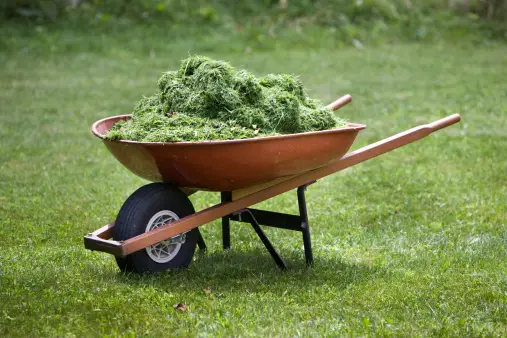Last Updated on November 26, 2021 by Real Men Sow
Grass Clipping mulch contains many nitrogen and potassium, making it a passing supplemental fertilizer in your vegetable garden. Grass clipping serves as a great organic mulch since using hay and manure risks getting herbicide contamination. There is also a possibility that using grass clippings as mulch can deter some pests like root maggots. However, grass clipping mulch needs special handling. They tend to form slimy mats when they’re added too thick or left in wet piles.
How to Cultivate Grass Clippings?
It’s best to grow a mixture of vigorous grasses and perennial clovers. Clovers help provide soil-borne nitrogen for itself and surrounding it. It’s best to have the clovers since they would make the clippings less compact.
You can repair damaged places with plugs of clover or sod. Spread balanced organic fertilizer over it in spring.
What is the best way to collect grass clippings?
A mower is a good investment, it should have a bag that you can lift off and dump and the ability to throw the clippings back to the ground as you go through. Once a month, you should self-mulch your grass to fertilize them and prevent weeds from growing.
The grass clippings you collect should be dry and mowing them should only remove one-third of its length. If there is constant rain, clippings can be harvested every 7 to 10 days.
Using Grass Clipping
It’s important to remember that your grass clippings should be applied thinly on the surface. After weeding, it’s best to spread the mulch. Sprinkle the grass clipping mulch to barely cover the surface. After a couple of weeks or after the next weeding, it’s time to spread grass clippings again.
Doing this would encourage frogs and box turtles to appear in your garden. This is good news since toads consume slugs at night, and turtles consume slugs in the morning.
When you’ve reached an abundance of grass clippings for mulch, you can spread them out to let them dry in the sun. This would be a stand-by supply of grass-clipping mulch.


